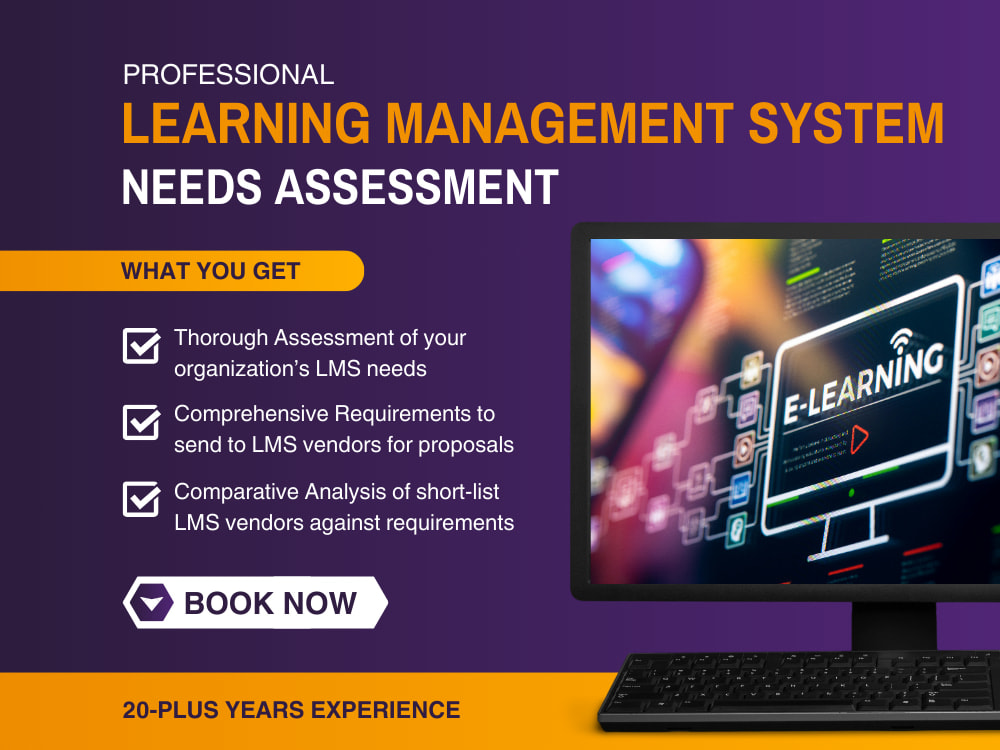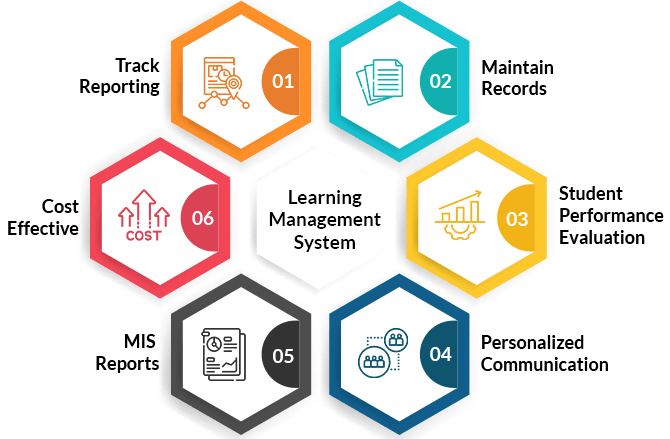The rise of remote work and hybrid learning models has accelerated the adoption of online learning management systems (LMS). These platforms offer increased accessibility and flexibility, catering to a wide range of educational needs. However, they also present challenges related to data security, student engagement, and the integration of new technologies. This article explores these systems in detail, guiding educators and trainers in selecting the best online learning management system tailored to their specific requirements.
Toc
- 1. Understanding Different Types of Online Learning Management Systems
- 2. Popular Online Learning Management Systems: A Comparative Analysis
- 3. Key Features to Consider When Choosing an Online Learning Management System
- 4. Implementing and Managing Your Chosen Online Learning Management System
- 5. Related articles 02:
- 6. Designing Engaging Online Courses Using Your LMS
- 7. Addressing Common Challenges in Online Learning with an LMS
- 8. Emerging Trends in Online Learning Management Systems
- 9. Conclusion
- 10. Related articles 01:
Understanding Different Types of Online Learning Management Systems

When it comes to online learning management systems, various types cater to different educational requirements. Understanding these types is crucial for selecting the right platform.
Cloud-Based LMS
Cloud-based online learning management systems are hosted online, allowing users to access them from any device with internet connectivity. This type of LMS is often subscription-based, making it scalable for institutions of all sizes. Benefits include reduced maintenance costs and easy updates.
Pros:
- Easy access from anywhere, promoting flexibility.
- Scalable to meet institutional needs as enrollment fluctuates.
- Lower upfront costs compared to self-hosted options, allowing institutions to allocate resources elsewhere.
Cons:
- Ongoing subscription fees can accumulate over time.
- Dependence on internet connectivity, which may be a barrier for some students.
Self-Hosted LMS
Self-hosted online learning management systems require institutions to install the software on their own servers. This option provides greater control and customization but demands more technical expertise for maintenance.
Pros:
- Complete control over data management and customization options tailored to specific institutional needs.
- No ongoing subscription fees, which can be financially beneficial in the long run.
Cons:
- Higher initial setup costs due to server and software expenses.
- Requires technical resources for maintenance, which may not be readily available in all institutions.
Open-Source LMS
Open-source platforms like Moodle LMS allow users to access core functionalities for free while offering extensive customization options. This flexibility is ideal for institutions with specific needs or limited budgets.
Pros:
- Cost-effective, with a robust community offering support and resources.
- Highly customizable, allowing institutions to adapt the platform to their unique educational contexts.
Cons:
- Technical expertise may be required for initial setup and ongoing management.
- Potentially less user-friendly than commercial options, which might discourage some educators.
Mobile Learning Management Systems
Mobile learning management systems are designed specifically for mobile devices, enabling students to access course materials anytime and anywhere. This flexibility is essential for modern learners who are often on the move.
Pros:
- Enhanced accessibility for students who prefer to learn on the go.
- Supports learning in diverse environments, whether at home, in transit, or in public spaces.
Cons:
- Limited features compared to desktop versions, potentially restricting user experience.
- May require internet access for full functionality, which can be a disadvantage in low-connectivity areas.
By understanding these types, educators can make informed decisions when choosing the best online learning management system for their educational objectives.
Popular Online Learning Management Systems: A Comparative Analysis

In evaluating online learning management systems, three platforms stand out: Blackboard Learn, Canvas LMS, and Moodle LMS. Each of these systems offers unique features and capabilities that cater to different educational environments.
Blackboard Learn
Blackboard Learn is a robust online learning management system favored by higher education institutions. It provides comprehensive course management tools, making it an ideal choice for managing large volumes of courses. The platform has undergone significant enhancements, including the Ultra experience redesign, which aims to provide a more modern and intuitive user interface.
Pros:
- Extensive resources and support for educators, including training materials and community forums.
- Strong integration capabilities with third-party applications, enhancing functionality.
- Scalable for larger institutions with complex course offerings.
Cons:
- Complex interface with a steep learning curve, potentially intimidating for new users.
- Higher costs compared to alternatives, which may be a concern for budget-conscious institutions.
Ideal Use Cases: Blackboard Learn is particularly suitable for universities and colleges that need a flexible, feature-rich platform for their extensive course offerings.
Canvas LMS
Canvas LMS is recognized for its user-friendly interface and robust integration capabilities. It supports various multimedia resources, making it easier for educators to create engaging online learning experiences. Canvas also integrates seamlessly with other Instructure products, such as Convrg, providing a comprehensive educational ecosystem.
Pros:
- Intuitive user interface enhances user experience, making it accessible for both educators and students.
- Strong analytics and reporting features allow educators to track student progress effectively.
- Excellent integration with tools like Google Drive and Microsoft Office, facilitating collaboration.
Cons:
- Limited offline functionality reported by some users, which can hinder learning experiences in low-connectivity situations.
- Pricing may be a concern for smaller institutions with tight budgets.
Ideal Use Cases: Canvas is ideal for K-12 schools and higher education institutions looking for an easy-to-use online learning management system that supports diverse teaching methods.
Moodle LMS
Moodle LMS is an open-source platform that offers significant flexibility and customization options. With a large global community, it provides access to numerous plugins and themes that enhance the learning environment. Moodle’s community-driven development ensures a continuous improvement of features based on user feedback.
Pros:
- Cost-effective solution with strong community support, making it accessible for institutions with limited budgets.
- Highly customizable with various plugins available, allowing for tailored learning experiences.
- Supports blended learning and diverse assessment methods, accommodating various teaching styles.
Cons:
- Initial setup may require technical expertise, which can be a barrier for some institutions.
- Some users find the interface less intuitive than commercial alternatives, potentially affecting user engagement.
Ideal Use Cases: Moodle LMS is well-suited for educational institutions with specific needs and those that prefer a customizable solution without substantial licensing fees.
Summary Table of Popular LMS Platforms
| Feature | Blackboard Learn | Canvas LMS | Moodle LMS |
|---|---|---|---|
| User-Friendliness | Moderate | High | Moderate |
| Cost | High | Moderate | Low (Free options) |
| Customization | Limited | Moderate | High |
| Ideal Users | Higher Education | K-12 and Higher Ed | Institutions needing customization |
Key Features to Consider When Choosing an Online Learning Management System

Selecting the right online learning management system involves considering various essential features that support functionality and pedagogy.
Course Creation and Management Tools
Effective online learning management systems provide intuitive and efficient course creation tools. Look for options that allow educators to design and manage content, assessments, and grades seamlessly, making the educational experience smoother for both instructors and learners.
Student Engagement Features
Engagement is key to successful online learning. Features such as gamification, discussion forums, and collaborative tools can enhance student interaction and motivation, fostering a dynamic learning environment.
Reporting and Analytics
Comprehensive reporting tools are essential for tracking student progress and identifying areas for improvement. An effective LMS should provide insights into engagement levels and performance metrics, enabling educators to make data-driven decisions.
Integration with Other Tools
Compatibility with existing systems, such as Google Classroom or other educational software, is crucial for a seamless learning experience. Ensure the LMS you choose can integrate with tools your institution already uses, streamlining workflows.
Accessibility and Mobile Compatibility
An online learning management system should ensure inclusivity for all students. Check for mobile compatibility and accessibility features, such as screen reader compatibility, keyboard navigation, alt text for images, and captioning for videos, to support learners with disabilities.
Technical Support and Training Resources
Adequate support and training resources are essential for both educators and students. The availability of help guides, troubleshooting resources, and training sessions can greatly enhance the user experience, ensuring that all users can maximize the platform’s potential.
Accessibility Features: A Crucial Consideration
When selecting an LMS, accessibility features should be a top priority. Compliance with Web Content Accessibility Guidelines (WCAG) ensures that all learners, including those with disabilities, can fully engage with course materials. Look for LMS that includes features such as:
- Screen Reader Compatibility: Allows visually impaired users to access content through text-to-speech technology.
- Keyboard Navigation: Enables users to navigate the platform without a mouse, which is essential for those with mobility impairments.
- Alt Text for Images: Provides descriptive text for images, making visual content accessible to screen reader users.
- Captioning for Videos: Ensures that all video content is accessible to deaf or hard-of-hearing students.
Implementing and Managing Your Chosen Online Learning Management System

Once you’ve selected an online learning management system, effective implementation and management are crucial for success.
Faculty Training
Providing comprehensive training for faculty is essential to ensure they can effectively utilize the LMS. Ongoing support can help educators maximize the platform’s potential, improving the overall quality of the online learning experience.
1. https://bonshop.com.vn/mmoga-online-courses-starting-now-your-guide-to-flexible-learning
2. https://bonshop.com.vn/mmoga-mcneese-state-online-degrees-your-flexible-path-to-career-advancement
4. https://bonshop.com.vn/mmoga-top-universities-with-online-courses-for-working-professionals
5. https://bonshop.com.vn/mmoga-your-path-to-a-rewarding-career-online-degrees-for-nutrition
System Maintenance and Updates
Regular maintenance and updates are critical for optimal performance and security. Ensure your chosen LMS includes a plan for routine updates and technical support to address any issues that may arise.
Ongoing Support and Troubleshooting
Addressing technical issues promptly is vital for maintaining a smooth learning experience. Providing clear troubleshooting guides and access to technical support can help educators and students navigate challenges effectively.
Building a Supportive Learning Community
Fostering collaboration and interaction among students can significantly enhance the learning experience. Utilize the communication tools within the LMS to promote group projects, discussions, and peer reviews, creating a vibrant learning community.
Designing Engaging Online Courses Using Your LMS
Creating effective online courses is paramount for student success. Here are strategies to enhance course design using an online learning management system.
Course Design Principles
Align course materials with clear learning objectives. Incorporate multimedia resources such as videos, interactive simulations, and infographics to create dynamic learning environments that cater to diverse learner preferences.
Assessment Strategies
Utilize various assessment methods, including quizzes, assignments, and projects, to measure student understanding effectively. Providing timely feedback through the LMS can enhance student engagement and motivation, helping learners stay on track.
Feedback Mechanisms
Offering constructive feedback is crucial for enhancing student learning. Use the LMS to provide timely and actionable feedback, helping students understand their strengths and areas for improvement.
Blended Learning Approaches
Integrating online learning with traditional classroom instruction can provide a more personalized educational experience. Leverage the LMS to offer supplementary materials and interactive activities that reinforce in-class learning, creating a cohesive educational journey.
Strategies for Maintaining Student Engagement
Keeping students motivated in an online environment can be challenging. Implement strategies such as gamification, interactive content, and regular check-ins to maintain interest and engagement throughout the course.
Addressing Common Challenges in Online Learning with an LMS
While online learning presents numerous benefits, challenges may arise that require attention.
Overcoming Technical Difficulties
Technical issues can disrupt the learning process. Providing clear troubleshooting guides and access to technical support can help educators and students navigate common challenges effectively, minimizing downtime.
Maintaining Student Engagement
Sustaining student motivation in an online environment can be difficult. Employ various strategies, such as gamification and interactive activities, to maintain interest and engagement throughout the course.
Adapting to Diverse Learning Styles
Creating inclusive learning experiences that cater to various learning styles is essential for student success. Utilize the LMS’s multimedia capabilities to design content that resonates with a wide range of learners, ensuring all students can benefit from the material.
Ensuring Accessibility for All Learners
Providing support for students with disabilities is crucial. Ensure that the LMS includes features that promote accessibility, allowing all students to engage with course materials effectively and fostering an inclusive educational environment.
Emerging Trends in Online Learning Management Systems
As the landscape of online education evolves, several emerging trends are shaping the future of online learning management systems.
AI-Powered Features
The increasing adoption of AI-powered features in LMS is revolutionizing the educational experience. Personalized learning pathways allow for tailored content delivery based on individual student performance and preferences. Automated feedback systems can provide immediate insights to students, enhancing their learning experience and promoting continuous improvement.
Data Analytics and Learning Analytics Dashboards
The growing importance of data analytics and learning analytics dashboards enables educators to measure student performance more effectively. These tools provide valuable insights into engagement, course completion rates, and areas needing improvement, empowering educators to make data-driven decisions that enhance learning outcomes.
Conclusion
Selecting the right online learning management system is a crucial step in creating effective and engaging online learning experiences. By carefully considering the different types of LMS available, comparing popular platforms like Blackboard Learn, Canvas LMS, and Moodle LMS, and focusing on key features such as ease of use, robust assessment tools, and strong student engagement features, educators can empower themselves and their students to thrive in the digital learning environment.
Accessibility considerations, ongoing training, and support are vital to maximizing the benefits of your chosen LMS. As you explore different LMS options, align your selection with the specific needs and goals of your educational institution to ensure a smooth and successful implementation. Start your journey today to find the perfect fit for your educational needs.
1. https://bonshop.com.vn/mmoga-mcneese-state-online-degrees-your-flexible-path-to-career-advancement
2. https://bonshop.com.vn/mmoga-online-courses-starting-now-your-guide-to-flexible-learning
3. https://bonshop.com.vn/mmoga-your-path-to-a-rewarding-career-online-degrees-for-nutrition
4. https://bonshop.com.vn/mmoga-top-universities-with-online-courses-for-working-professionals











